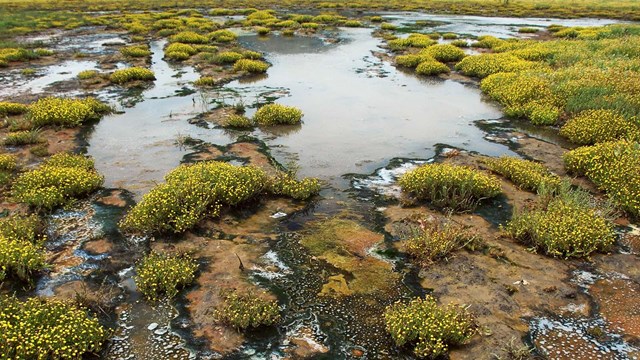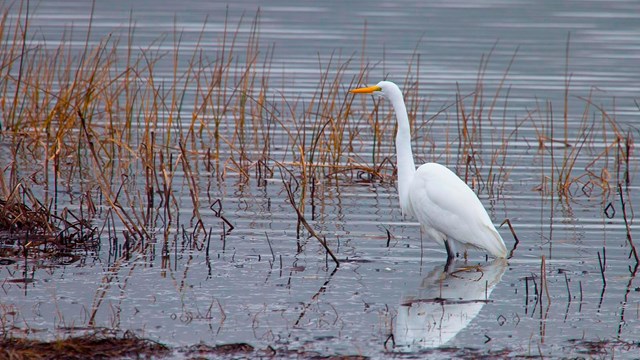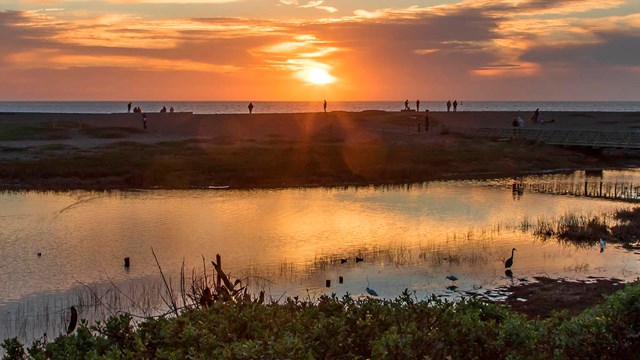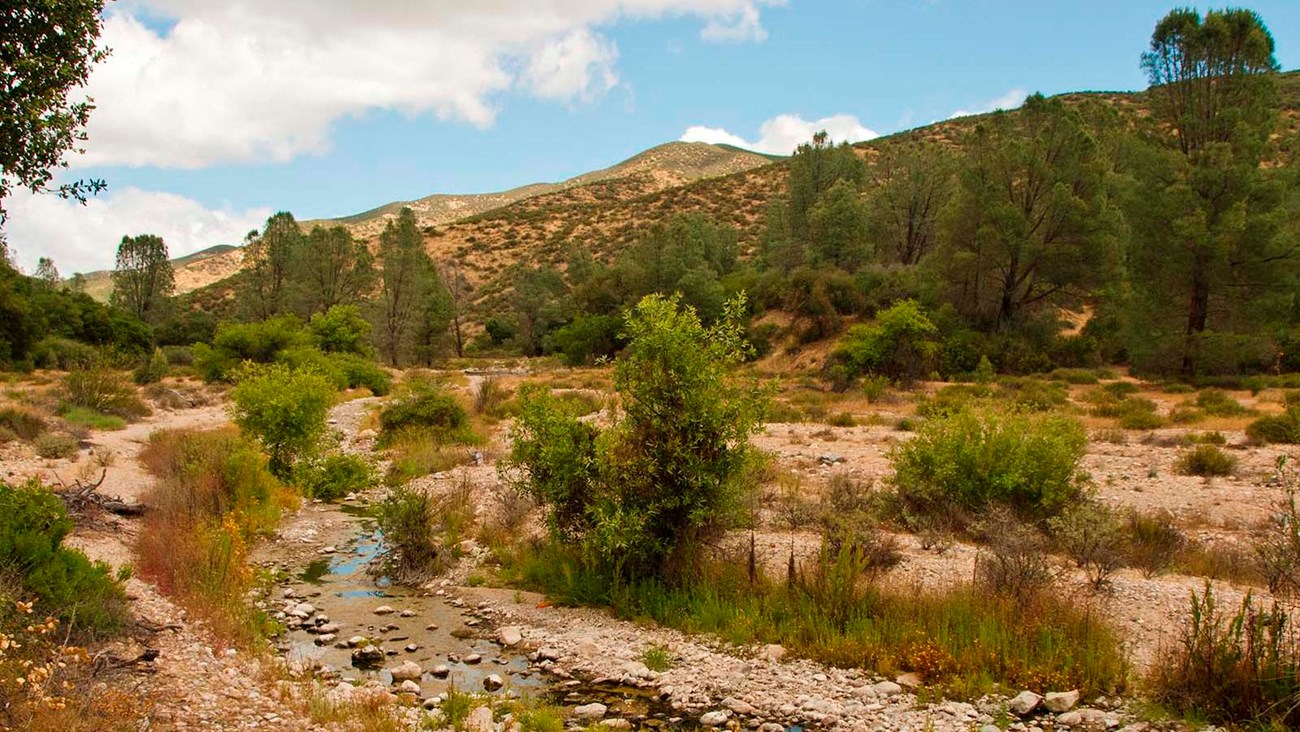Where freshwater streams meet saltwater, they form estuaries—one of the most fertile habitats on earth. These rich habitats provide spawning grounds for crabs and numerous fish species, and are a vital stopping point for migratory ducks and shorebirds as they fly thousands of miles up and down the Pacific Flyway.
The shores of an estuary are often fringed with wetlands—a generic term used to describe a variety of habitats where the land is at least sometimes covered with water. Salt marshes are a particular kind of wetland that occurs in saline environments, like near estuaries or bays. Common freshwater wetlands can include marshes and swamps, and are typical of the upper Sacramento–San Joaquin River Delta. Another type of wetland habitat is riparian habitat, which is found along streams and lakes and typically supports verdant stands of water-loving plants. In all these kinds of wetlands, submerged and partially submerged vegetation provide food and refuge for a myriad of species, and also capture sediment and pollutants.
Land development has claimed much of the wetland habitat in the Bay Area, but a number of restoration projects, including those spearheaded by the National Park Service and its partners at Crissy Field, Drakes Estero, Muir Beach, and the Giacomini and Banducci farms, are attempting to reverse that trend.

Browse articles and information summaries about wetlands and estuaries in the San Francisco Bay Area.

Get the latest on wetlands and estuaries from the Bay Area Nature & Science Blog.

Explore more research, reports, and resources on wetlands and estuaries in San Francisco Bay Area parks.
Long-term Monitoring
The San Francisco Bay Area Network Inventory and Monitoring Program is tracking changes in riparian habitat and wetlands in Pinnacles National Park. Within Pinnacles, wetlands host a high diversity of native trees and shrubs, and harbor many of the parks mammals, birds, reptiles, amphibians (including the federally threatened California red-legged frog), and invertebrates. Possible loss of wetlands or reductions in wetland size and diversity currently pose a great risk to habitats and wildlife in Pinnacles. Monitoring stream channel characteristics and vegetation species composition can provide an early warning to deteriorating riparian habitats.

Dig in to monitoring protocols, reports, and more on the San Francisco Bay Area Network's Riparian Habitat Monitoring page.
Last updated: July 11, 2018
